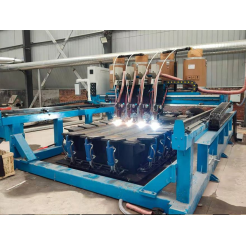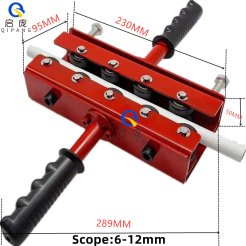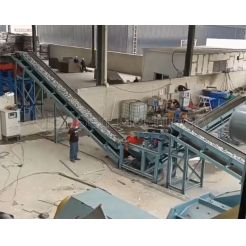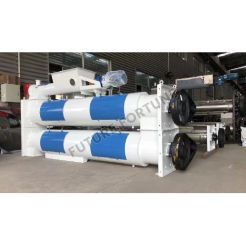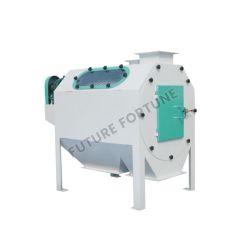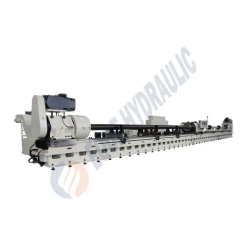SDHD-R-R-1300 WIDE-BELT SANDER
This sander are suitable for the suface treatment of wood materials such as fixed thickness sander and fine sander. It has very good processing effect for various kings of science and technology wood veneer,multilayer board, medium and high density board,particleboard,plywood,malacca,blockboard,etc.
Product Description
SDHD-R-R-1300 WIDE-BELT SANDER

The machine is equipped with a protective door on the side, which has the function of noise reduction,dust non-diffusion and operation protection. The machine is more beautiful.
The machine body adopts integral welding , and after stress removal treatment, so the machine very durable.
The machine’s roller diameter is 300mm/400mm/420mm and other sizer,and the sander performance is good after accurate dynamic balance detection. Frequency conversion speed regulation is adopted for feeding, and the production efficiency is high.
This sander are suitable for the suface treatment of wood materials such as fixed thickness sander and fine sander. It has very good processing effect for various kings of science and technology wood veneer,multilayer board, medium and high density board,particleboard,plywood,malacca,blockboard,etc.
The fixed thickness spiral roller is installed ay an angle of 8°to form an angle with the processed wood, it has the effect of no collapse ditch during sanding and thickness setting, greatly improves the flatness and smoothness, and can effectively eliminate the wavy phenomenon.
Roller type and conveyor belt dual drive system combined feeding, play an effective buffer role,no slip.
SANDER PARAMETER
| NAME | PARAMETER |
| machine model | SDHD-R-R-1300 |
| working width | <1300mm |
| working thickness | 3-90mm |
| working length | >850mm |
| size of sand belt | 1340*2680mm |
| feeding speed | 0-65m/min adjust speed |
| power of feeding system | 11kw |
| inverter of feeding system | 11kw |
| reducer of feeding system | R87-17.08 |
| feeding conveyor belt type | vacuum/no vacuum/roller conveyor |
| sanding roller diameter | 320mm/400mm |
| roller type | steel roller |
| power of sanding roller | 75kw+55kw |
| sanding roller bearing brand | NSK |
| machine size | 3000L*2850W*2280H |
| machine weight | about 9500kgs |

To achieve precise processing of the sanding roller of a sanding machine, the following aspects can be considered:
1. High-precision processing equipment: Use advanced CNC machine tools and other equipment for turning, grinding and other processing operations to ensure processing accuracy.
2. Strict process control: Develop detailed processing technological processes and specifications, including the accurate setting of cutting parameters, feed rates, etc.
3. Accurate measurement and detection: Frequently use high-precision measuring tools such as micrometers and vernier calipers during the processing to conduct real-time monitoring and adjustment of dimensions, roundness, cylindricity, etc.
4. Temperature control: Pay attention to the temperature changes during the processing and take appropriate cooling measures to prevent the influence of thermal deformation on accuracy.
5. Tool selection and maintenance: Select the appropriate tool and ensure the sharpness and good condition of the tool to obtain an accurate processing effect.
6. Worker skills and experience: Operators need to have rich experience and superb skills and operate strictly according to the requirements.
7. Quality control system: Establish a complete quality control system to strictly check and inspect each link of the processing.
8. Material selection: Select high-quality and well-uniform raw materials to make rollers to reduce the influence of the material's own defects on processing accuracy.
The working efficiency of the sander is mainly related to the following factors:
1. Grit size of the sanding belt: Coarser sanding belts generally remove materials at a faster rate, but the surface finish may be relatively poor; finer sanding belts are the opposite.
2. Speed of the sanding belt: A fast running speed of the sanding belt may improve the efficiency to a certain extent.
3. Pressure setting: Appropriate pressure can ensure effective sanding without affecting the efficiency.
4. Feed speed of the workpiece: Too fast or too slow feed speed will affect the efficiency and processing quality.
5. Motor power: Motors with high power usually can provide stronger power, which is helpful to improve the efficiency.
6. Type and design of the sander: Different types (such as disc type, belt type, etc.) and designs of sanders have different efficiencies.
7. Material and shape of the workpiece: Relatively soft materials are easier to sand, and complex shapes may require more time to process.
8. Maintenance status of the sander: Good maintenance ensures the normal operation of the machine and avoids affecting the efficiency due to downtime caused by faults.
The following are some key points for the maintenance of the sander in daily work:
1. Cleaning: Regularly clean the dust, debris and other sundries on the surface of the sander, sanding belt and the surrounding area.
2. Checking the sanding belt: Check whether the sanding belt is damaged or misaligned, and replace or adjust it in time.
3. Checking the transmission parts: Such as belts, chains, etc., to ensure that their tightness is appropriate and there is no wear.
4. Lubrication: Appropriately lubricate the relevant moving parts, bearings, etc.
5. Checking the electrical system: Ensure that the wiring is not damaged and plugs, switches, etc. are normal.
6. Tightening screws and nuts: To prevent loosening from affecting operation and accuracy.
7. Motor maintenance: Keep the motor clean and check the heat dissipation situation.
8. Regular calibration: To ensure processing accuracy and performance.
9. Pay attention to the working environment: Avoid working for a long time in an environment that is too humid, dusty or with too high or too low temperature.
10. Training operators: So that they can operate and maintain the sander correctly to avoid damage caused by improper use.
The following are some considerations when choosing the type of sanding belt for a sander:

1. Processed materials: According to the material of the workpiece, such as wood, metal, plastic, etc., choose a sanding belt suitable for this material. For example, for wood, sanding belts with different grits and materials may be required, while metals require more wear-resistant ones.
2. Purpose of sanding: Whether it is for rough grinding, fine grinding or polishing, different purposes require sanding belts with different characteristics.
3. Grit: Coarser grit is used for rapid material removal, and finer grit is used to obtain a smoother surface.
4. Material of the sanding belt: There are different materials such as aluminum oxide and silicon carbide, each with different performance characteristics.
5. Durability requirements: If it needs to be used for a long time with high intensity, choose a more durable sanding belt.
6. Flexibility: For some workpieces with complex shapes, a sanding belt with better flexibility may be required to better fit the surface.
7. Cost factor: Different types and qualities of sanding belts have different prices, and a balance should be made according to the budget.
For sanding the wood surface, setting the thickness and polishing, the grit numbers of the sanding belts to be selected are as follows:

- Sanding: If it is necessary to remove the flaws, scratches or unevenness on the wood surface, usually a sanding belt with 80 to 120 grit can be selected. The sanding belt in this grit range can effectively remove the unevenness on the wood surface without overly wearing the wood.
- Thickness setting: When it is necessary to accurately trim the thickness of the wood to a certain size, a sanding belt with 60 to 80 grit can be used. The sanding belt of this grit number can remove the material on the wood surface relatively quickly to help achieve the required thickness.
- Polishing: For the wood that needs to obtain a smooth and shiny surface, a sanding belt with 150 to 200 grit can be selected for polishing. Higher grit sanding belts (such as above 240 grit) can be used to further improve the surface finish.
It should be noted that the selection of the sanding belt will also be affected by factors such as the type of wood, hardness, and the required surface effect. In actual operation, it can be tested on a small piece of wood first to determine the most suitable grit number of the sanding belt. In addition, different brands and types of sanding belts may have slightly different effects, so the suggestions of the sanding belt manufacturer or consulting a professional woodworker can be referred to.
Email: hongyunchangsander@163.com
Mob.: +86 139 5321 1153
WeChat: +86 139 5321 1153
Whatsapp: +8613953211153
Add.: Daxin Town Jimo District Qingsao City Shandong Province China



